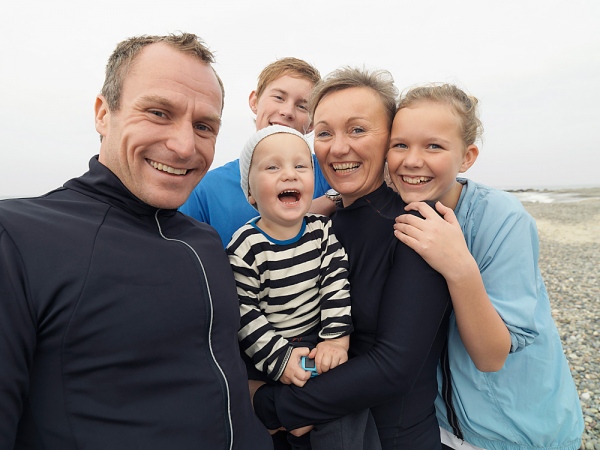Europe: Population in Europe
2012/08/14



Demographics:


Population growth and decline in and around Europe
Since the Renaissance, Europe has had a major influence in culture, economics and social movements in the world. The most significant inventions had their origins in the Western world, primarily Europe and the United States. Some current and past issues in European demographics have included religious emigration, race relations, economic immigration, a declining birth rate and an aging population.
In some countries, such as Ireland and Poland, access to abortion is currently limited; in the past, such restrictions and also restrictions on artificial birth control were commonplace throughout Europe. Abortion remains illegal on the island of Malta where Catholicism is the state religion. Furthermore, three European countries (the Netherlands, Belgium, and Switzerland) and the Autonomous Community of Andalusia (Spain) have allowed a limited form of voluntary euthanasia for some terminally ill people.
A century ago, Europe had nearly a quarter of the world's population. The population of Europe has grown in the past century, but in other areas of the world (in particular Africa and Asia) the population has grown far more quickly. Among the continents, Europe has a relatively high population density, second only to Asia. The most densely populated country in Europe is the Netherlands, ranking third in the world after Bangladesh and South Korea. Pan and Pfeil (2004) count 87 distinct "peoples of Europe", of which 33 form the majority population in at least one sovereign state, while the remaining 54 constitute ethnic minorities.
According to UN population projection, Europe's population may fall to about 7% of world population by 2050, or 653 million people (medium variant, 556 to 777 million in low and high variants, respectively). Within this context, significant disparities exist between regions in relation to fertility rates. The average number of children per female of child bearing age is 1.52. According to some sources, this rate is higher among Muslims in Europe. The UN predicts the steady population decline of vast areas of Eastern Europe. The Russia's population is declining by at least 700,000 people each year. The country now has 13,000 uninhabited villages.
Europe is home to the highest number of migrants of all global regions at 70.6 million people, the IOM's report said. In 2005, the EU had an overall net gain from immigration of 1.8 million people, despite having one of the highest population densities in the world. This accounted for almost 85% of Europe's total population growth. The European Union plans to open the job centres for legal migrant workers from Africa.
Emigration from Europe began with Spanish settlers in the 16th century, and French and English settlers in the 17th century. But numbers remained relatively small until waves of mass emigration in the 19th century, when millions of poor families left Europe.
Today, large populations of European descent are found on every continent. European ancestry predominates in North America, and to a lesser degree in South America (particularly in Argentina, Chile, Uruguay and southern Brazil). Also, Australia and New Zealand have large European derived populations. Africa has no countries with European-derived majorities, but there are significant minorities, such as the White South Africans. In Asia, European-derived populations (specifically Russians) predominate in Northern Asia.
Race and Nationality
Virtually all the people are of Caucasoid (white) ancestry, but their physical traits vary. As a general rule, but one with many exceptions, the people in the north have a heavier build than those in the south. The northerners' hair and skin tend to be lighter colored, and their heads are generally narrower and longer.
In Europe there are about 40 different nationalities, or groups of people with a common language, history, and culture. Some nationalities are scattered throughout several countries. Others share a single country with one or more other groups. Conflicting nationalities within a country have long been the source of much political unrest, particularly in the countries of eastern Europe.
Languages
Almost all of the languages spoken in Europe are part of the Indo-European language family. Each has a large written literature. The most widely used languages are Great Russian, German, English, French, and Italian.
Many Europeans speak more than one language. Some countries have more than one official language. Switzerland, for example, has four—German, French, Italian, and Romansh.
Religion
Christianity is the predominant religion, and the Roman Catholic Church has by far the largest membership. It is the dominant church in Ireland, France, Spain, Portugal, Italy, Austria, Slovakia, Hungary, Lithuania, and Poland. Northern Europe is largely Protestant. Leading Protestant groups include Anglicans in England; Lutherans in northern Germany, Scandinavia, Finland, Latvia, and Estonia; and Calvinists in Switzerland, the Netherlands, and Scotland. The Eastern Orthodox Church is the leading church in eastern and southeastern Europe, including Russia.
Judaism is the largest non-Christian religion. Jews live mainly in the large cities. Muslims are concentrated in parts of the southeast, particularly in Bosnia and Herzegovina, Albania, Turkey, and Azerbaijan.
- Europe News
-
- WORLD: Tuition fees row: education expert warns over graduate earnings
- WORLD: UN report attacks austerity budgets for growing inequality
- FRANCE: Aluminium-Lithium Alloys Fight Back
- UNITED KINGDOM: Jaguar Land Rover Takes Next Step in Aluminium Recycling with REALITY Program
- EUROPE: Ball Corporation Debuts Three New Aluminium Beverage Can Sizes
- CHINA: Zhongwang Acquires German Alumnium Extrusion Firm ALUnna
- Trending Articles
-
- SOUTH AFRICA: Nigeria and South Africa emerge from recession
- BAHRAIN: Bahrain issues new rules to encourage fintech growth
- NIGERIA: Nigeria has been one of the hardest-hit economies due to its over-dependence on oil
- ARUBA: Director of Tourism Turks and Caicos after Irma: Tourism, visitors, hotels current status
- ANGOLA: Angola: Elections / 2017 - Provisional Data Point Out Qualified Majority for MPLA
- WORLD: How fair is our food? Big companies take reins on sourcing schemes













